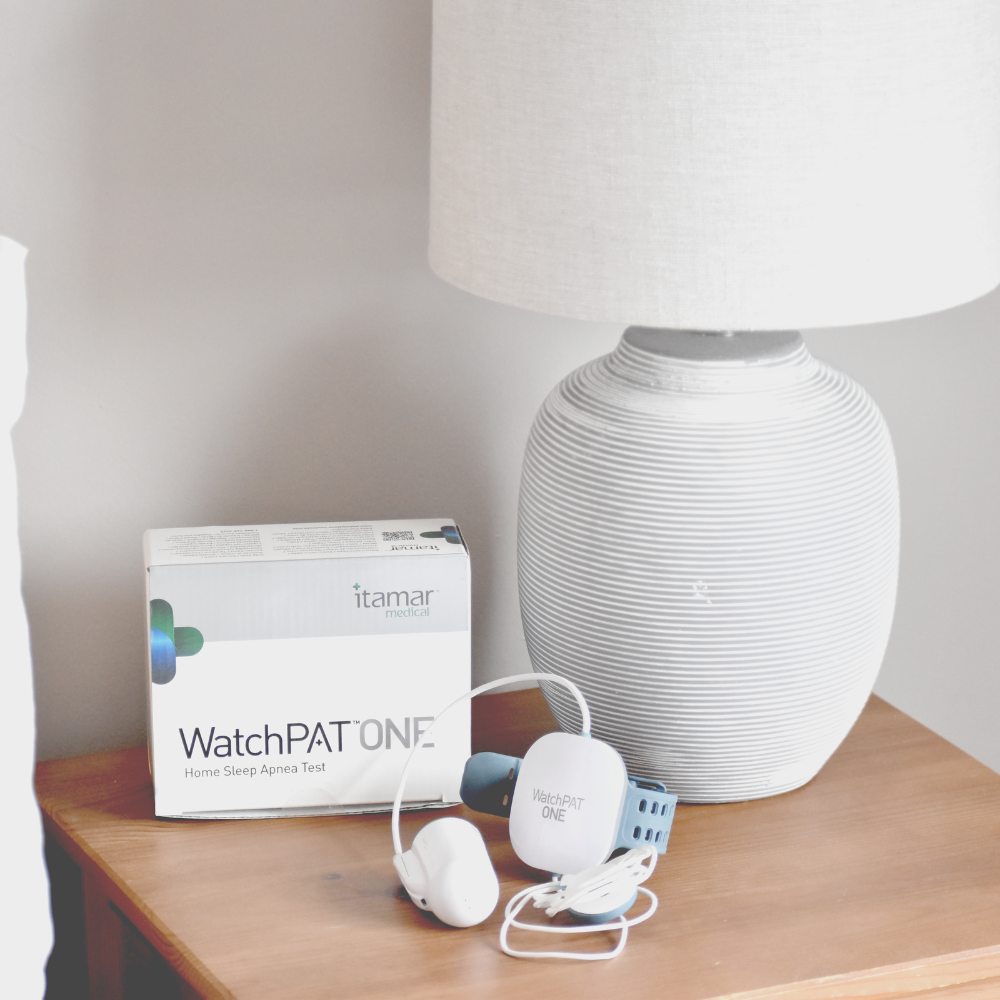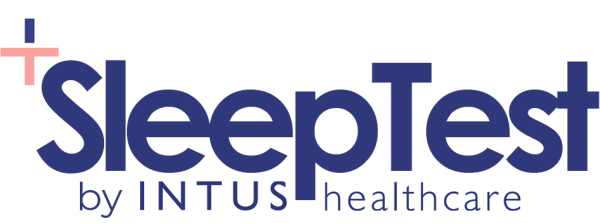Fact Checked
Intus Healthcare’s writers, customer service team, and sleep experts review and ensure this information is accurate.
Last updated on March 28th, 2025 at 01:11 pm
The average adult needs between 7 to 9 hours of sleep every night, and different sleeping positions have different benefits.
Gradually training your body to change sleeping positions can benefit your day-to-day life. Research shows that reduced sleep can increase the risk of diabetes, heart disease and depression(1).
For those with the sleep disorder Obstructive Sleep Apnoea (OSA), sleeping position plays a huge role in the severity and frequency of breathing pauses throughout the night.
Table of Contents
The Best Sleeping Position For Sleep Apnoea
The foods we eat, what we drink and how we sleep all play a part in the quality of our sleep. Most people have a preferred or usual sleeping position, and you may not realise how it can affect your breathing during the night. Sleeping in certain positions can improve your sleep quality and reduce your apnoea events (breathing pauses) if you have Obstructive Sleep Apnoea.
So, what sleeping position is best for Sleep Apnoea, and can your sleeping position help your Sleep Apnoea? Whether you sleep on your stomach, back or side, you could worsen your Sleep Apnoea symptoms without knowing it, decreasing your overall sleep quality.
It is much easier to control your breathing while sitting or standing, whereas when you lay down to sleep, your body adopts a horizontal posture, and gravity pushes against your airways.
Obstructive Sleep Apnoea occurs when muscle tissue obstructs or narrows your airways while you are asleep —causing symptoms such as snoring, choking during sleep and gasping for air.
To get the most from your OSA treatment, it is important to understand which sleeping position suits your Sleep Apnoea.
Is Sleeping on Your Back Good For Sleep Apnoea?
Sleeping on your back, also known as the supine sleeping position, can affect your sleep.
If you suffer from neck or back pain, sleeping on your back may offer relief and promote proper spinal alignment and protection. .
However, if you have Sleep Apnoea, studies have found that sleeping on your back increases the frequency of breathing pauses and breathing restrictions (apnoea’s and hypopnoea’s)(2). This is because your tongue and soft tissue are easily relaxed when sleeping on your back, making airway obstructions more common.
Tip – Placing a pillow under your knees can help to support your spine when sleeping on your back. Alternatively, you can elevate your head to reduce sinus congestion and Sleep Apnoea discomfort.
Sleeping on your back can increase snoring and other symptoms of OSA. If you do not suffer from Sleep Apnoea and regularly snore, sleeping on your back will worsen your snoring.
Does Sleeping on Your Stomach Help Sleep Apnoea?
Sleeping on your stomach allows gravity to pull down your tongue and soft tissues, opening your airway.
However, this position can increase discomfort if you suffer from neck or shoulder pain and cause your mask to dislodge.
Tip – To make it more comfortable to sleep on your stomach, consider a soft pillow to prevent your shoulders and neck from aching.
The Foetal Position
The foetal position is a common sleeping position and. is similar to sleeping on your side; however, your legs are curled towards your chest.
Benefits of sleeping in the foetal position:
- Reduces heartburn and acid reflux
- Reduces back pain
- Reduces OSA airway blockages
- Reduces snoring
The foetal position holds many benefits but is not recommended for those with shoulder pain as it puts pressure on the shoulder. A study found that 67% of people with shoulder pain slept on their side(3).
Tip – Place a pillow behind your back to prevent you from rolling onto your back.
Sleeping on Your Side
Many people sleep on their side, but which side is best?
Does sleeping on your left side help with Sleep Apnoea?
Sleeping on your left side helps to control OSA symptoms, encouraging blood flow and helping to open the airways.
Sleeping on your left side can help encourage bowel movements, as it allows gravity to help with the process of moving waste through your ileocecal valve.
It is recommended to only sleep on your right side if you cannot sleep on the left. Sleeping on your right side improves blood flow and helps keep your airway open.
For those who suffer from gastroesophageal reflux diseases (GERD), heartburn and snoring, sleeping on your right or left side can reduce these.
A study) on OSA and left-side sleeping found that sleeping on the left side reduced patients’ AHI (Apnoea Hypopnoea Index)(4). It also found that left-side sleepers experienced less severe Sleep Apnoea occurrences.
However, like every sleeping position, there is a downside, including:
- Shoulder stiffness
- Jaw tightness
- Lower back pain
Tip – Place a pillow between your legs to help align your hips, reducing back pain.
Another option is a CPAP pillow; these pillows are designed with cut-outs for your CPAP mask to fall in when sleeping on your side.
Is it Better to Sleep Flat or Elevated with Sleep Apnoea?
Sleeping with your head elevated with a thicker pillow can help keep your airway open, reducing breathing obstructions and your OSA symptoms. Propping up pillows whilst sleeping on your back can also help with acid reflux.

Home Sleep Apnoea Test
The test monitors your heart rate, snoring intensity, blood oxygen levels, body positioning, and more, providing accuracy comparable to testing used in sleep clinics for in-depth sleep analysis.
The simple-to-use test takes just one night to complete, and results are returned within two working days after completion.
Our experienced NHS-qualified sleep professionals independently analyse all studies, providing follow-up advice and support.
How Can I Sleep Better with Sleep Apnoea?
CPAP therapy is the most common treatment method for Sleep Apnoea, providing continuous pressurised air to keep the airway open. According to the Sleep Apnoea Trust, around 700,000 people in the UK use a CPAP machine(5).
They are ways to improve your therapy to make your sleeping position more comfortable. By choosing a nasal CPAP mask, you can sleep on your stomach or side easier as they are less bulky, giving you more freedom to move during sleep.
You may find that if you breathe through your mouth, a nasal mask is less effective; a way to resolve this is by wearing a chin strap. This gently holds your mouth closed so you can wear a nasal mask and sleep in any position comfortably.
Alternatively, depending on the severity and type of Sleep Apnoea, you could use a Positional Sleep Therapy trainer instead of a CPAP machine. The small device encourages you to sleep on your side to reduce breathing obstructions and snoring.
Round Up For the Best Sleep Position
Your sleeping position alone won’t control your OSA, but choosing the best sleeping position for your Sleep Apnoea, keeping a healthy weight and optimising your lifestyle all play a part in the success of your treatment.
If you are choking in sleep, snoring and waking up excessively tired, you could have Sleep Apnoea. Taking our Free online Sleep Apnoea Risk test lets you know if you could have Sleep Apnoea.
Contact us to speak to our friendly team if you need any advice.
About Our Editorial Team
Danni is a degree-educated content writer passionate about helping those with Sleep Apnoea sleep better; she works closely with our clinical and customer care teams to ensure that each article is thoroughly researched and accurate.
Her writing aims to inform, support, and advise readers about Sleep Apnoea, helping to raise awareness and promote effective treatment options.
She has written many health-focused articles, reaching hundreds of readers annually, to help people sleep better and live healthier lives.
Lateisha King is an experienced Sleep Clinician with advanced training in polysomnography and respiratory health.
With over six years of experience, including at the prestigious Guy’s and St Thomas’ NHS Foundation Trust Hospital, she has conducted and reviewed more than 500 diagnostic sleep studies.
Her expertise in sleep science ensures that all articles align with the latest data and treatment protocols, providing readers with trustworthy and practical advice to improve their sleep health and overall well-being.
REFERENCES
- National Center for Chronic Disease Prevention and Health Promotion. (2022, September 13). Sleep and Chronic Disease. Centers for Disease Control and Prevention. https://www.cdc.gov/sleep/about_sleep/chronic_disease.htm. Accessed: 28.09.2022.
- Joosten, S. A., O’Driscoll, D. M., Berger, P. J., & Hamilton, G. S. (2014). Supine position related obstructive sleep apnea in adults: Pathogenesis and treatment. Sleep Medicine Reviews, 18(1), 7–17. https://doi.org/10.1016/j.smrv.2013.01.005. Accessed: 28.09.2022.
- Bo Kempf & Alice Kongsted (2012) Association between the side of unilateral shoulder pain and preferred sleeping position: a cross-sectional study of 83 Danish patients. Available at: https://pubmed.ncbi.nlm.nih.gov/22608285/. Accessed: 28.09.2022.
- Ozcan Ozeke (2011) Influence of the right- versus left-sided sleeping position on the apnea-hypopnea index in patients with sleep apnea. Available at: https://pubmed.ncbi.nlm.nih.gov/21678115/. Accessed: 28.09.2022.
- Sleep Matters. (2022, June 30). HOW MANY PEOPLE IN THE UK HAVE OBSTRUCTIVE SLEEP APNOEA (OSA)?. The Sleep Apnoea Trust. https://sleep-apnoea-trust.org/research/. Accessed: 28.09.2022.





